Best new cars coming in 2024 and beyond
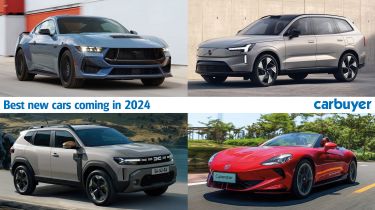
Once again it’s been another year packed full of new cars, with 2023 welcoming everything from superminis to super-SUVs. Electric car sales hit a record high, with most major manufacturers now offering at least one EV in their range. More importantly, we’ve seen a stream of new electric cars from China taking on (and occasionally beating) the more established brands
Looking toward the new cars coming in 2024 and beyond, this trend is only going to continue. As EV technology continues to rapidly improve, and with cheaper electric cars emerging, we expect more people to make the jump from traditional combustion-power to electric - and to move away from established brands too. That doesn’t mean there won’t be any exciting petrol or diesel cars to look forward to in 2024, however. Manufacturers now have until 2035 to phase out their combustion-engined cars, so there are still plenty more to come next year for those who prefer to fill up, rather than plug in.

 Top 10 best electric cars 2023[1]
Top 10 best electric cars 2023[1]
SUVs will continue to dominate our roads going into 2024, their practicality and elevated view of the road remaining ever-popular with UK buyers. We have no doubt that manufacturers will continue to satisfy the demand next year, with a raft of new SUVs on the horizon, from electric urban run-arounds to leather-lined, luxurious off-roaders.
We’ve compiled a list of the top new cars to keep an eye out for next year, separated into four categories – small cars, mid-size cars, premium cars, performance cars and cars coming in 2025 and beyond. There’s something for everyone, so read on to find out which new car you should be looking out for!
Small cars
Despite large SUVs being all the rage, we’ve seen plenty of small cars appear this year - and 2024 is shaping up to continue that trend. If you’re looking to get behind the wheel of a new compact run-around next year, here are our top picks coming soon.
Citroen e-C3
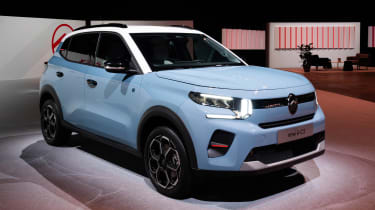

The new Citroen e-C3[2] is set to be one of the cheapest EVs on sale when it reaches dealerships next year. A starting price of under £23,000 will put the French supermini up against other budget-friendly electric cars, such as the popular MG4 and our Carbuyer Car of the Year 2023, the BYD Dolphin[3].
Despite the low starting price, the e-C3 will still manage up to 199 miles of range from its 44kWh battery and can be topped up via a 100kW rapid charger. An even cheaper model with a 124-mile range will appear at a later date, solidifying the e-C3’s place as the most affordable new electric supermini.
We’ve had a peek at the interior of the e-C3 too, and it looks to be a big step on from the current model, with a large infotainment screen and a head-up display. We can’t wait to try it next year.
Dacia Duster


Fans of Dacia’s small SUV[4] will be delighted to know that an all-new model[5] is on the way in 2024. Building upon the success of the current model, the new Duster will provide great interior space and rugged looks for a wallet-friendly price – expect sub-£20k for the entry-level model, despite an inevitable push upmarket in terms of design, tech and quality.
New to the lineup is a choice of hybrid options, giving certain Duster models limited electric-only driving capabilities. There’s a host of new optional off-roading features too, with different selectable driving modes: Auto, Snow, Mud/Sand, Off-Road and Eco. Perhaps the most interesting new feature to look out for is the ‘Sleep Pack’, an optional fold-out double bed that fits in the back – perfect for a trip into the wilderness!
Dacia Spring
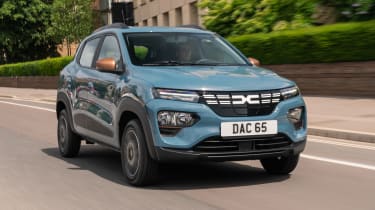

‘Budget’ and ‘electric’ are two words that don’t often cross paths in the new-car world, but 2024 could be the year where that changes. The aforementioned Citroen e-C3 looks to be a bargain at around £23,000, but the new Dacia Spring[6] could undercut this further with a sub-£20k price tag.
Much like other cars from Dacia, simplicity is the Spring’s selling point. The interior is basic and the technology isn’t groundbreaking, but these compromises are what keep the price so astoundingly low for an EV. Its electric motor produces 64bhp, which should be plenty for pootling around town, while a top speed of 78mph adds far more usability over the cheaper but much slower and far less practical Citroen Ami[7].
The battery is relatively small at 27kWh, but it has enough juice to give the Spring a 190-mile range if you stick to slow, urban driving. The small battery also improves charging time – expect a five-hour 0-100% charge time from a standard 7kWh home wall box.
MINI Cooper
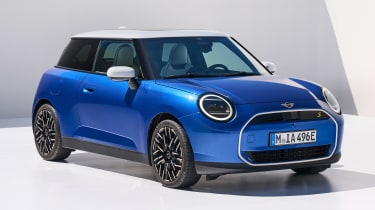

We first saw the new MINI Cooper[8] fully unveiled at the Munich Motor Show in September 2023, and the Carbuyer team couldn’t be more excited to test a production model in 2024. Gone is the MINI[9] ‘Hatch’ – the ‘Cooper’ name is now used across all variants – and there will be both electric and petrol-powered versions appearing in 2024, with a choice of three-door, five-door and convertible body styles.
The new MINI continues to feature plenty of retro styling cues, with its round headlights and contrasting roof colour options. The cabin has an uncluttered look, with a large 9.4-inch circular display placed centrally on a slim dashboard that features attractive knitted textile inserts. The Cooper Electric will start from £30k and have a choice of two power outputs, the top-spec SE model getting 215bhp from a 54kWh battery – good for up to 250 miles of range. We’re still waiting for technical details for the petrol models.
Having been impressed by our prototype drive earlier this year, we think the new MINI Cooper’s arrival next spring is worth getting excited about.
Renault 5 E-Tech
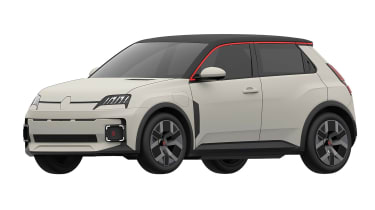

The new MINI will face stiff competition, however, especially from the equally retro-themed Renault 5 E-Tech[10]. Reviving the famous ‘5’ nameplate and looks of the brand’s pioneering 1970’s hatchback, the newcomer is a small EV that aims to combine style and fun with low running costs and affordable pricing.
A starting price of around £30k will get you a 52kWh battery with 248 miles of range, putting it right on a par with the MINI. From the images we’ve seen so far, we know it will have five doors, five seats and chunky styling. Other unique features we’re looking forward to are the bi-directional charging capability (allowing you to sell electricity from the car’s battery back to the grid), plus the charge indicator display that’s shaped like a 5 and located on the bonnet.
Volvo EX30
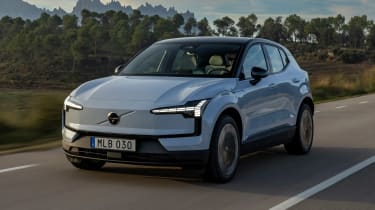

We got behind the wheel of the new Volvo EX30[11] earlier this year and were mightily impressed by its style, comfort and affordability. It may be Volvo’s new entry-level car, but its smooth electric powertrain and premium interior belie its £31,000 starting price.
Most buyers are likely to opt for the 268bhp, single-motor variant, but Volvo will also offer a twin-motor, four-wheel drive 422bhp model – the Swedish marque’s most powerful car ever, which is capable of 0-62mph in a supercar-humbling 3.4 seconds. With features like one-pedal driving and rapid charging compatibility, we expect the EX30 to be a popular option in the hotly-contested small electric SUV segment when it goes on sale next year.
Mid-size cars
Buyers who need something larger than a typical supermini are going to be spoiled for choice in 2024, with a raft of new mid-size cars hitting the road. From what we’ve seen, there will be more options to choose from than ever before, satisfying a range of budgets and body styles.
Kia EV3
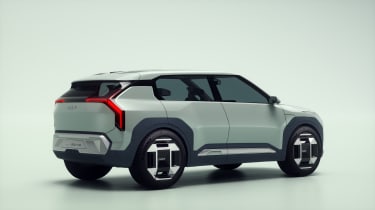

Kia is set to expand their electric lineup even further in 2024 with the introduction of the EV3[12], a mid-size SUV that we saw in concept car form earlier this year. That car wore the South Korean brand’s latest design language, with chunky proportions and a shorter wheelbase than the Kia EV6[13], and we expect little to change when it reaches production.
The EV3 will most likely be based on the same E-GMP platform used by Kia and Hyundai’s latest electric offerings, from the Ioniq 6[14] to the EV9 SUV[15], and offer both single-motor and pricier dual-motor variants. Given the success of the recent electric models from Kia and Hyundai, we have no doubt that the EV3 will pose a threat to the mid-size SUV segment when it reaches showrooms next year.
MINI Countryman
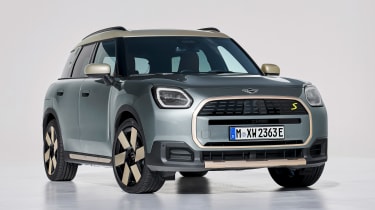

MINI’s popular mid-size family car, the Countryman[16], will enter its third generation[17] next year, with the option of mild-hybrid or fully-electric models. Revealed in September 2023, the new Countryman trades the old model’s round styling for a squarer, more chiselled look, but retains its predecessor’s lifted hatchback proportions.
Starting from £28,500, the Countryman will initially be offered as a petrol model, before a pricier pure-electric model arrives later in the year. There will be a variety of petrol engine options to choose from, ranging from the base 168bhp Countryman C up to the top-spec, 296bhp JCW ALL4[18]. Electric models will share much of their componentry with the BMW iX1[19], featuring a 65kWh battery in either 201bhp single-motor guise, or 309bhp dual-motor SE spec.
Inside will be much the same as the new MINI Cooper, with the 9.4-inch circular infotainment display and knitted textiles carried over from the small hatchback. Having ridden in a prototype of the new Countryman, we can attest to the car’s comfort and improved interior space over the outgoing model.
Peugeot 3008


The 3008[20] is one of Peugeot’s most popular cars, but that hasn’t stopped the brand going for gold with its replacement. Due to arrive late in 2024, the third generation mid-size SUV[21] has been given a more athletic look, with a coupé-like roofline that takes its cues from the French firm’s handsome 408[22]. Standout styling cues include Peugeot’s trademark three-claw LED running light signature at the front and rear, eye-catching wheel designs and sharp body lines across the car.
Despite its rakish looks, the new 3008 claims to offer the same 520-litre boot space as its predecessor and promises to be equally comfortable for passengers. However, the all-new interior design features a curved 21-inch screen that sits on top of the dashboard and handles both the vital driving information and media, with Peugeot’s familiar i-Toggle touch panel of shortcut buttons beneath.
More importantly, the new 3008 will be the first to benefit from electrified powertrains (the old car was only available in petrol and diesel guises). It’s likely that an all-electric version will be available from launch, with a choice of two battery sizes: 73kWh and 98kWh. Peugeot claims the former can manage up to 326 miles on a charge, while the latter is capable of up to 435. Both single-motor front-wheel drive and dual-motor model all-wheel drive options will be available, while a plug-in hybrid version is also on the cards.
Ford Explorer
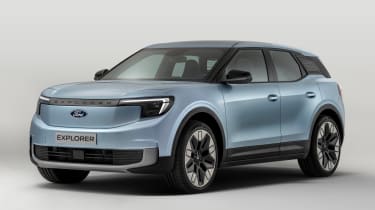

Ford’s relationship with Volkswagen dates back to the Ford Galaxy[23] and VW Sharan[24] MPVs, but this latest collaboration is arguably the most important yet. Using the VW Group’s MEB all-electric platform, the all-new Ford Explorer[25] finally gives the blue oval a credible contender in the rapidly expanding mid-size EV market.
Unveiled earlier this year, the Explorer was originally due on sale in autumn 2023, but sales and deliveries have been delayed until summer 2024 due to an incoming UN regulation regarding standardisation of battery safety regulations. Speaking of which, the newcomer offers battery sizes between 55kWh to 82kWh, which results in a range of between 218 miles and 335 miles depending on the model.
The entry-level single-motor Explorer gets 168bhp, while there’s also a mid-range 282bhp option. Finally, there’s the dual-motor variant with 335bhp on tap – 40bhp more than the closely related VW ID.4 GTX[26].
Standard kit will include a heated steering wheel and massaging seats, climate control, keyless entry, and a 15-inch screen infotainment system with Apple CarPlay and Android Auto. In terms of practicality, there’s a decent-sized 450-litre boot, which is bigger than the brand’s Mustang Mach-E’s, but around 100 litres down on the ID.4’s.
BMW X2
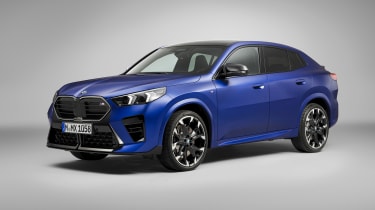

When it was launched in 2017, the original BMW X2[27] was a slightly sportier-looking sibling to the more rugged X1 small SUV[28]. However, the all-new second second-generation[29] version has been treated to far sleeker looks, its heavily raked roofline and aggressive stance similar to those of the brand’s larger X4 and X6 coupe-SUV[30]s.
Based on the latest X1 compact crossover, the new X2 has grown in size, which means more space inside for people and passengers. It also comes with the latest version of BMW’s iDrive infotainment system, complete with a distinctive curved screen and the latest connectivity.
It’s fitted with a choice of traditional petrol engines as well as cutting-edge electrified powertrains. The entry-level sDrive20i features a 168bhp mild-hybrid three-cylinder petrol, while the racy, four-wheel drive M35i packs a turbocharged 2.0-litre four-cylinder generating 296bhp. There’s also an all-electric version for the first time, with the iX2 packing a twin motor set-up that produces 309bhp for a 0-62mph time of 5.6 seconds and a range of up to 266 miles.
Prices for the new BMW X2 start from £39,365, rising to £57,445 for the iX2.
Skoda Superb
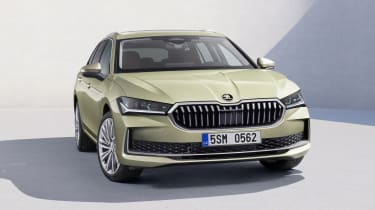

When is a new car not a new car? Arriving in 2024, the latest fourth-generation Skoda Superb[31] is actually a heavy facelift of its predecessor[32] and will continue to be available in the saloon-like hatchback or vast estate bodystyles. There’s also updated tech and revised engines, including a plug-in hybrid with up to 60 miles of range.
Exterior updates mean the Czech machine is slightly longer and taller than before, boosting interior space as well as luggage capacity. The hatch offers up to 645 litres of boot space now (up 20 litres) with the rear seat in place, while the Superb Estate can accommodate 690 litres in the same configuration.
The styling is a refinement of the previous model’s, with the Superb still featuring a long bonnet that flows into an octagonal grille that’s flanked by slimmer headlights featuring the latest Matrix LED technology. The design is not just sharper, but also more slippery to help with the Superb’s efficiency.
Inside, there’s an even more upmarket feel, with the infotainment touchscreen on top-spec models growing to a sizeable 13 inches. There’s also a 10-inch Virtual Cockpit display in front of the driver, as well as the brand’s novel Smart Dial set-up that features clever customisable rotary controllers for the air-conditioning, infotainment and driver mode functions. As always, owners will also benefit from a number of Skoda’s Simply Clever solutions, such as a cooling device for the wireless charging pad so your smartphone doesn’t overheat.
Under its sleeker new bonnet, the Superb will be available with three petrol and two diesel motors, plus a plug-in hybrid version. The latter combines an efficient 1.5 petrol engine with an electric motor for a combined output of 201bhp, plus a 25.7kWh battery that provides up to 60 miles of pure-electric driving.
The Superb Estate will go on sale in January 2024, followed by the hatch in April, with prices expected to start from around £35,000.
Volkswagen Passat


Few cars have as long a history as the VW Passat[33], which celebrated its 50th birthday this year. Now about to enter its ninth generation[34], the understated German family promises to deliver comfort, refinement and a big helping of practicality when it hits showrooms in early 2024.
Unlike the old car, which was also available as a traditional four-door saloon, the latest model is only available as an estate. As a result, the Passat should be an incredibly practical choice, with boot space growing by 40 litres to 690 litres. Fold the rear bench flat and the capacity is increased to a cavernous or 1,920 litres. Yet the VW will continue to be as upmarket as ever, with plenty of premium materials and the brand’s latest tech.
We got the chance to sample the Passat for ourselves when we drove a disguised pre-production prototype example earlier in 2023. It’s based on the same underpinnings as the old car (and the forthcoming fourth-generation Skoda Superb[35]), which means it's comfortable and easy to drive, with excellent refinement and precise handling. There’s also plenty of space on offer, with rear seat occupants getting loads of leg and headroom.
As for engines, the new plug-in hybrid powertrain is likely to be popular. Available in two guises (standard and sporty GTE) each boasts an EV-only range of 62 miles. Buyers can also pick a mild-hybrid petrol, as well as regular petrol and diesel options, with all featuring a DSG dual-clutch automatic gearbox as standard.
Renault Scenic
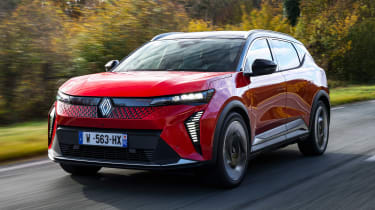

After starting its life as a practical MPV around four decades ago, the Renault Scenic[36] has been reinvented as a stylish all-electric SUV[37]. Based on the same underpinning as the French firm’s Megane E-Tech hatchback, the newcomer combines bold looks with a welcome dollop of family-friendly versatility and eye-catching prices.
The bold styling helps the Scenic stand apart from the competition, which in the family EV segment includes the Volkswagen ID.4[38] and Hyundai Ioniq 5[39]. Inside, the Scenic features Renault’s latest infotainment system, with a 12.3-inch digital dash and a 12-inch screen powered by Google software. For the tech lovers out there, more than 50 apps are available for the Scenic, including Deezer, Spotify, Amazon Music and Waze.
Staying true to the practical family car roots of its name, the Scenic serves up plenty of space for passengers, plus the cabin is packed with a total of 39 litres of storage. Its 545-litre boot is bigger than that in the ID.4 or Ioniq 5, while folding down the rear seats increases the total capacity to an estate car-rivalling 1,670 litres.
From launch, the Renault will be available with two sizes of battery: 60kWh and 87kWh. The first offers a range of up to 261 miles, while the latter is good for 385 miles. Buyers can choose from 168bhp or 217bhp single-motor front-drive powertrain, though all-wheel drive models have been hinted at.
Crucially, Renault has revealed the Scenic will undercut key rivals on price when it goes on sale next year, with the £40,995 entry-level version costing around £4,000 less than an equivalent Tesla Model Y[40].
Skoda Kodiaq
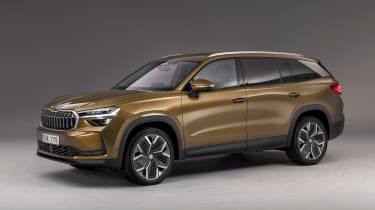

Skoda has turned into something of an SUV specialist in the last few years – and its flagship Kodiaq[41] is one the best of a talented bunch. Boasting even more space than before, enhanced technology, a more luxurious finish and more efficient engines, the latest version of the seven-seat Skoda is likely to be one most eagerly anticipated arrivals of 2024.
With a generous 61mm increase in length over its predecessor[42], the Kodiaq is bigger than ever. Moreover, Skoda claims the extra inches have been added to the rear of the car, meaning more boot space plus greater legroom for those in the third-row seats. Elsewhere, the interior has clearly been influenced by the brand’s all-electric Enyaq[43], as it features big digital display screens, extensive leather trim inserts and a curated collection of materials and themes for buyers to choose from.
But one addition for the Kodiaq is a set of physical ‘Smart Dials’ on the centre console that can control various functions and settings depending on how you interact with them. The new dials have allowed Skoda to clean up the front cabin while retaining physical controls for key functions.
The second generation Kodiaq’s engine range is set to include mild-hybrid petrol and regular diesel options plus, for the first time ever, a plug-in hybrid setup. The Kodiaq PHEV will offer a pure-electric driving range of more than 60 miles, meaning it should fall into the 8% Benefit-in-kind tax band[44] for company-car[45] drivers.
Ssangyong Torres EVX
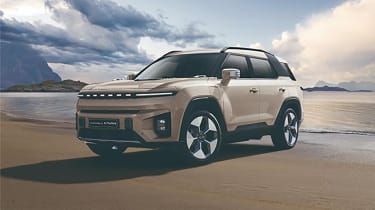

By the time the Torres EVX hits the market, it’ll be badged KGM rather than SsangYong, as the Korean firm undergoes a rebranding. But the company will still have the same mission, offering larger and better-equipped cars than you’d expect for the money, which in the Torres EVX’s case should be around £40,000.
For that, you’ll get a Skoda Enyaq rival with a fair bit more size and space – in fact, a lot more, with an enormous 839 litres of boot capacity. The company hasn’t revealed many details on the EVX’s performance or range, but in Korea, it’s supplied in a single 201bhp form with a 73.4kWh battery pack. A pick-up truck based on the same platform is also expected to arrive in 2024.
Subaru Forester
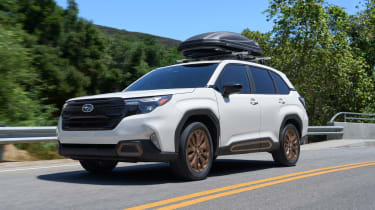

The Subaru Forester[46] isn’t a common sight on UK roads but continues to delight its small and loyal band of owners, and that’s unlikely to change when the new model[47] arrives. That includes sticking with a flat-four petrol engine and all-wheel drive – if you want an electric Subaru, the Solterra[48] remains the only option.
The Forester’s styling is typically chunky but looks a lot more cohesive than the outgoing car. There are improvements inside too, including a 11.6-inch portrait touchscreen and the latest iteration of Subaru’s EyeSight driver assistance technology. Pricing should start at around the £40,000 mark, a couple of thousand more than the current car.
Volvo EX90
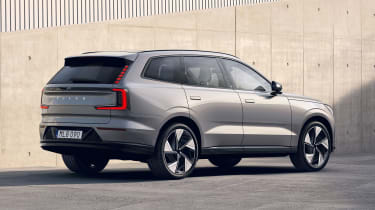

One of the best family SUVs is going all-electric in 2024, as the Volvo XC90[49] makes way for the EX90[50]. The range will kick off with 402bhp and 510bhp dual-motor setups, meaning both are all-wheel drive, while a 107kWh battery pack should give both enough juice for around 360 miles of range. 250kW charging capability could enable a 10-80% top-up in half an hour if you can find a fast enough public charger.
In terms of design, the EX90 looks quite similar to the outgoing XC90, albeit with modernised styling cues and the notable absence of a grille. Inside, Volvo has gone minimalist, deleting almost all the buttons and switches you’d ordinarily find – it makes for a clean look, but as we found with the smaller EX30, not an entirely practical choice. This seven-seater won’t be cheap: expect a Range Rover[51]-matching price tag of around £100,000.
Premium Cars
Buyers shopping at the pricier end of the car market will be spoiled for choice too. Manufacturers are gradually phasing out their traditional combustion-engined premium cars in favour of electric models, and we expect this trend to continue through 2024. If you’re looking for cutting-edge EV technology, then you should be getting excited about these upcoming premium cars.
Audi A6 e-tron
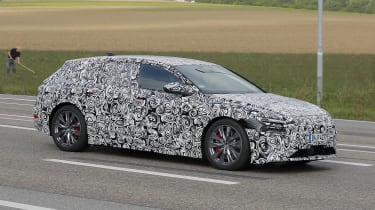

With both BMW and Mercedes-Benz fielding executive cars with electric power in the shape of the i5 and EQE[52], it’s no surprise to see Audi doing likewise with the A6 e-tron[53]. Arriving in 2024, it will be available in two forms, as a Sportback saloon (think along the lines of the existing A5 or A7 Sportback[54]s), and as an Avant estate car.
It’ll be similar under the skin to the Q6 e-tron below (and the upcoming Porsche Macan EV[55]), which may also mean a dual-motor model with a 100kW battery pack, potentially good for a range of 400 miles, thanks to better aerodynamics than its SUV counterparts.
Audi Q6 e-tron


The Audi Q6 e-tron[56] will fit between the Q4 e-tron[57] and Q8 e-tron[58] in Audi’s range, and will go head to head in the market with the BMW iX[59]. Audi has revealed the new car will offer 800-volt charging, capable of topping up the 100kWh battery pack from 10-80% in around half an hour – if you can find a charger powerful enough to meet that charging speed. With two motors for all-wheel drive, and power outputs of 396bhp up to 510bhp for the SQ6, it’s sure to be quick, and that large battery could offer up to 370 miles on a charge.
Like the A6 e-tron, Audi will offer a pair of body styles, this time a practical conventional SUV shape and in sleeker Sportback form, but both will get a high-tech triple screen layout, comprising an 11.9-inch driver display, 14.5-inch central touchscreen, and a 10.9-inch passenger display, the latter actually able to play videos, with a privacy mode that should prevent the driver from watching along.
Hyundai Ioniq 7


Hyundai has been on a roll in recent years. The Ioniq 5 hatchback[60] and Ioniq 6 saloon[61] cars have impressed us with their clever tech and quirky looks, and now the South Korean firm will be adding another electric arrow to their quiver, in the form of the Ioniq 7 SUV.
The Ioniq 7 will share its platform with the Kia EV9[62], another electric SUV that we reckon is the current seven-seater to beat. We expect it to feature the same 99.8kWh battery and it should be offered with a choice between a single motor or dual-motor four-wheel drive layout. In terms of its styling, the Ioniq 7 will share its boxy proportions with its Kia sibling, and it will wear a horizontal light bar across the front, as found on the Ioniq Concept Seven and the latest Hyundai Kona[63].
Polestar 3
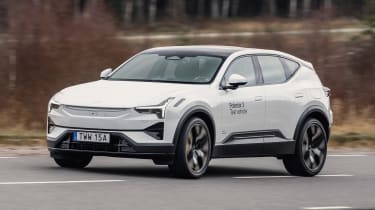

Sweden’s Polestar cars are arriving thick and fast in 2024, following a few years of letting the Polestar 2[64] settle into the market. While there’s some similarity underneath to the Volvo EX90, the Polestar 3[65] is less Volvo-like than the first couple of cars from the brand, and offers some impressive features (including a 25-speaker Bowers & Wilkins audio and a 14.9-inch touchscreen) for its starting price of just under £80,000.
It uses a twin motor setup, for all-wheel drive and a 482bhp output – good for 0-62mph in five seconds. A 510bhp Performance model will be quicker still, while a 107kWh battery pack offers a claimed 379-mile range. 250kW charging speeds promise a 10-80% top-up in only half an hour.
Polestar 4


The Polestar 4[66]’s styling should attract plenty of attention once it hits the road next spring, and it will no doubt leave a few passers-by wondering why it doesn’t have a rear window. Drivers will instead use cameras and side mirrors to see out the back, and Polestar claims abandoning the rear screen improves rear headroom – and we didn’t find it too claustrophobic when we got to sit in a prototype at a preview event.
The car’s performance shouldn’t be in question though, with up to 537bhp from its dual-motor setup, and a 102kWh battery that, based on the taller 107kWh Polestar 3, should be enough for more than 350 miles of range. A 15.4-inch touchscreen dominates the dashboard, but it’ll be a lot more affordable than the Polestar 3, with a starting price of around £55,000.
Porsche Macan EV
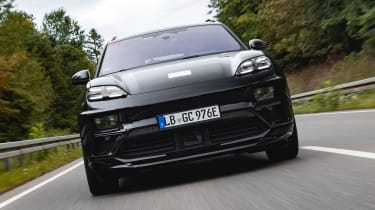

The Porsche Macan[67] has been an enormous success for the German sports car brand – it’s second only to the larger Cayenne[68] in Porsche’s global sales figures. Demand is sure to continue with the all-electric Macan EV[69], which should combine the Macan’s appeal with the performance of the brand’s first electric car, the Taycan[70].
The new Macan will share its platform with the new Audi Q6 e-tron[71], but expect the Porsche to deliver its maker’s usual driving characteristics, as it’ll include the latest version of Porsche Active Suspension Management, and torque vectoring for its electric motors. Two versions will be offered at launch, a regular Macan and a Macan Turbo, the latter with as much as 600bhp. Range from the 100kWh battery pack is said to be good for 310 miles.
Range Rover EV
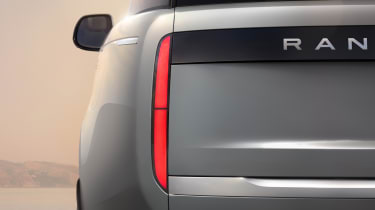

The Rolls-Royce Spectre and BMW i7[72] have shown that nothing quite beats electric power for true luxury, and Jaguar Land Rover knew that when developing the current fifth-generation Range Rover[73], because it was prepared for EV power from the start. That model will arrive in 2024, ready to compete in an increasingly electrified luxury car market.
Details are thin on the ground, but insiders suggest the Range Rover can accommodate a battery pack of around 100kWh – on par with several other large EVs. The car’s size and weight will no doubt limit range, but something in the region of 300 miles is feasible. EV power shouldn’t harm the Range Rover’s off-road ability, but it’s sure to make it popular in London’s ULEZ, too…
Toyota Land Cruiser
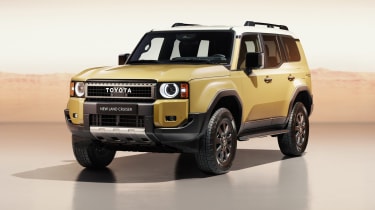

The chunky new Toyota Land Cruiser[74] is sure to be one of 2024’s most distinctive new cars, with styling harking back to some of the earliest Land Cruiser models – a heritage that goes back more than 70 years. The last few generations of Land Cruiser have been as tough and reliable as ever, but now it has style on its side.
Off-road ability remains important, so Toyota has worked hard to trim the Land Cruiser’s overhangs (that’s the amount the bumpers extend beyond the front and rear wheels, which is crucial to clearing obstacles) to a minimum. Unlike the other upcoming cars in this segment, the new Land Cruiser is not an EV – The 4x4 will launch with a 201bhp, 2.8-litre turbodiesel engine, with a mild hybrid model joining in 2025. Pricing is expected to start from around £50,000.
Performance cars
It may be a niche market, but manufacturers aren’t giving up on the performance car for 2024. In fact, we’re beginning to see more dedicated electric sports cars than ever before, with several new models reaching our roads in the coming year. It will be interesting to see how these high-voltage speed machines stack up against the petrol-powered establishment.
Cupra Tavascan
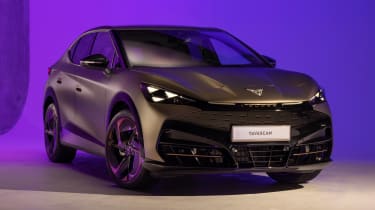

Cupra has quickly cultivated an image of exciting styling and fun driving characteristics since its break from SEAT, and with the Tavascan[75], Cupra’s equivalent to the Volkswagen ID.4[76] and Skoda Enyaq, that looks set to continue. It has sharper styling than either of its cousins, and takes several of its styling cues from the identically-named concept that appeared at the 2019 Geneva Motor Show.
You’ll be able to choose between two models, a 282bhp rear-motor model, and a 335bhp, 679Nm dual-motor variant. There’s a driver-focused cabin design, complete with the usual copper-coloured accents and a 15-inch touchscreen, with sporty bucket seats as standard. It should certainly give the Kia EV6 and Nissan Ariya[77] something to think about.
Ford Mustang
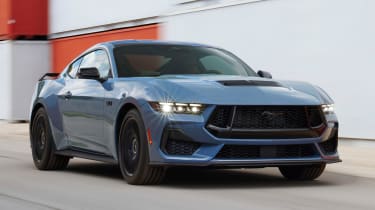

A new Ford Mustang[78] doesn’t come around very often. The last one arrived in 2015, and that was the first that UK buyers had been able to buy in right-hand drive. The new Mustang is already available to customers in its home market, and should appear in Europe in 2024, complete with an old-school driving experience that’s becoming increasingly rare.
The Mustang gets a 5.0-litre, naturally-aspirated V8 petrol engine producing 450bhp, and just like the outgoing car, two gearbox choices will be available: a six-speed manual, and a 10-speed automatic. A track-focused Dark Horse model adds extra chassis bracing, high-performance Brembo brakes, and extra oil coolers to handle faster driving.
Hyundai Ioniq 5 N
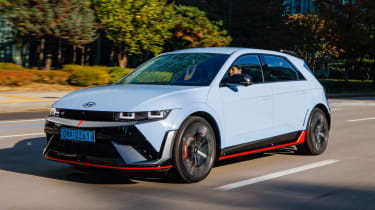

We’ve been waiting a while for an electric car whose fun factor isn’t purely focused on straight-line speed, but early impressions suggest the Hyundai Ioniq 5 N[79] could be that car. Like combustion-powered N models, Hyundai has worked hard to make the Ioniq 5 fun in the corners too, despite being a much larger and heavier car than an i20 N[80] or i30 N[81].
It comes packed with driver-focused tech, such as torque vectoring, more than one setting aimed at pulling large, smokey drifts, and a synthesised gearshift called N e-shift, which delivers power more like a combustion engine than the usual seamless EV experience. It’s not cheap, at £65,000, but it’s one of the most exciting EVs so far.
MG Cyberster
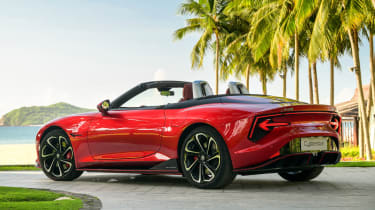

It’s been a while since we’ve seen an MG badge on a sports car – the last TF roadsters built at the old Longbridge factory in the UK emerged in 2011. Since then, MG has focused on worthy but mostly dull family cars, until summer 2024 when the sleek, Chinese-built Cyberster[82] will arrive.
This electric roadster will offer 309bhp rear-motor and 536bhp dual-motor variants, the latter going from 0-62mph in 3.2 seconds – a lot quicker than the old TF. Range and pricing are both yet to be confirmed, but are expected to be around 300 miles, and around £50,000, which also makes it a lot more expensive than those old MG sports cars. But for well-heeled roadster enthusiasts who want to go electric, it’s one of the only options.
To find out which cars impressed us the most heading into 2024, read our 2024 Carbuyer Car of the Year winners...[83]
References
- ^ Top 10 best electric cars 2023 (www.carbuyer.co.uk)
- ^ new Citroen e-C3 (www.carbuyer.co.uk)
- ^ BYD Dolphin (www.carbuyer.co.uk)
- ^ Dacia’s small SUV (www.carbuyer.co.uk)
- ^ all-new model (www.carbuyer.co.uk)
- ^ new Dacia Spring (www.carbuyer.co.uk)
- ^ Citroen Ami (www.carbuyer.co.uk)
- ^ new MINI Cooper (www.carbuyer.co.uk)
- ^ MINI (www.carbuyer.co.uk)
- ^ Renault 5 E-Tech (www.carbuyer.co.uk)
- ^ Volvo EX30 (www.carbuyer.co.uk)
- ^ EV3 (www.carbuyer.co.uk)
- ^ Kia EV6 (www.carbuyer.co.uk)
- ^ Ioniq 6 (www.carbuyer.co.uk)
- ^ EV9 SUV (www.carbuyer.co.uk)
- ^ the Countryman (www.carbuyer.co.uk)
- ^ third generation (www.carbuyer.co.uk)
- ^ JCW ALL4 (www.carbuyer.co.uk)
- ^ BMW iX1 (www.carbuyer.co.uk)
- ^ 3008 (www.carbuyer.co.uk)
- ^ third generation mid-size SUV (www.carbuyer.co.uk)
- ^ 408 (www.carbuyer.co.uk)
- ^ Ford Galaxy (www.carbuyer.co.uk)
- ^ VW Sharan (www.carbuyer.co.uk)
- ^ all-new Ford Explorer (www.carbuyer.co.uk)
- ^ VW ID.4 GTX (www.carbuyer.co.uk)
- ^ BMW X2 (www.carbuyer.co.uk)
- ^ X1 small SUV (www.carbuyer.co.uk)
- ^ all-new second second-generation (www.carbuyer.co.uk)
- ^ coupe-SUV (www.carbuyer.co.uk)
- ^ fourth-generation Skoda Superb (www.carbuyer.co.uk)
- ^ its predecessor (www.carbuyer.co.uk)
- ^ VW Passat (www.carbuyer.co.uk)
- ^ ninth generation (www.carbuyer.co.uk)
- ^ Skoda Superb (www.carbuyer.co.uk)
- ^ Renault Scenic (www.carbuyer.co.uk)
- ^ all-electric SUV (www.autoexpress.co.uk)
- ^ Volkswagen ID.4 (www.autoexpress.co.uk)
- ^ Hyundai Ioniq 5 (www.autoexpress.co.uk)
- ^ Tesla Model Y (www.carbuyer.co.uk)
- ^ Kodiaq (www.carbuyer.co.uk)
- ^ its predecessor (www.carbuyer.co.uk)
- ^ Enyaq (www.autoexpress.co.uk)
- ^ Benefit-in-kind tax band (www.autoexpress.co.uk)
- ^ company-car (www.autoexpress.co.uk)
- ^ Subaru Forester (www.carbuyer.co.uk)
- ^ the new model (www.carbuyer.co.uk)
- ^ Solterra (www.carbuyer.co.uk)
- ^ Volvo XC90 (www.carbuyer.co.uk)
- ^ the EX90 (www.carbuyer.co.uk)
- ^ Range Rover (www.carbuyer.co.uk)
- ^ EQE (www.carbuyer.co.uk)
- ^ A6 e-tron (www.carbuyer.co.uk)
- ^ Sportback (www.carbuyer.co.uk)
- ^ Porsche Macan EV (www.carbuyer.co.uk)
- ^ Audi Q6 e-tron (www.carbuyer.co.uk)
- ^ Q4 e-tron (www.carbuyer.co.uk)
- ^ Q8 e-tron (www.carbuyer.co.uk)
- ^ BMW iX (www.carbuyer.co.uk)
- ^ Ioniq 5 hatchback (www.carbuyer.co.uk)
- ^ Ioniq 6 saloon (www.carbuyer.co.uk)
- ^ Kia EV9 (www.carbuyer.co.uk)
- ^ Hyundai Kona (www.carbuyer.co.uk)
- ^ Polestar 2 (www.carbuyer.co.uk)
- ^ Polestar 3 (www.carbuyer.co.uk)
- ^ Polestar 4 (www.carbuyer.co.uk)
- ^ Porsche Macan (www.carbuyer.co.uk)
- ^ Cayenne (www.carbuyer.co.uk)
- ^ all-electric Macan EV (www.carbuyer.co.uk)
- ^ Taycan (www.carbuyer.co.uk)
- ^ Audi Q6 e-tron (www.carbuyer.co.uk)
- ^ BMW i7 (www.carbuyer.co.uk)
- ^ Range Rover (www.carbuyer.co.uk)
- ^ new Toyota Land Cruiser (www.carbuyer.co.uk)
- ^ Tavascan (www.carbuyer.co.uk)
- ^ Volkswagen ID.4 (www.carbuyer.co.uk)
- ^ Nissan Ariya (www.carbuyer.co.uk)
- ^ new Ford Mustang (www.carbuyer.co.uk)
- ^ Hyundai Ioniq 5 N (www.carbuyer.co.uk)
- ^ i20 N (www.carbuyer.co.uk)
- ^ i30 N (www.carbuyer.co.uk)
- ^ Cyberster (www.carbuyer.co.uk)
- ^ our 2024 Carbuyer Car of the Year winners... (www.carbuyer.co.uk)